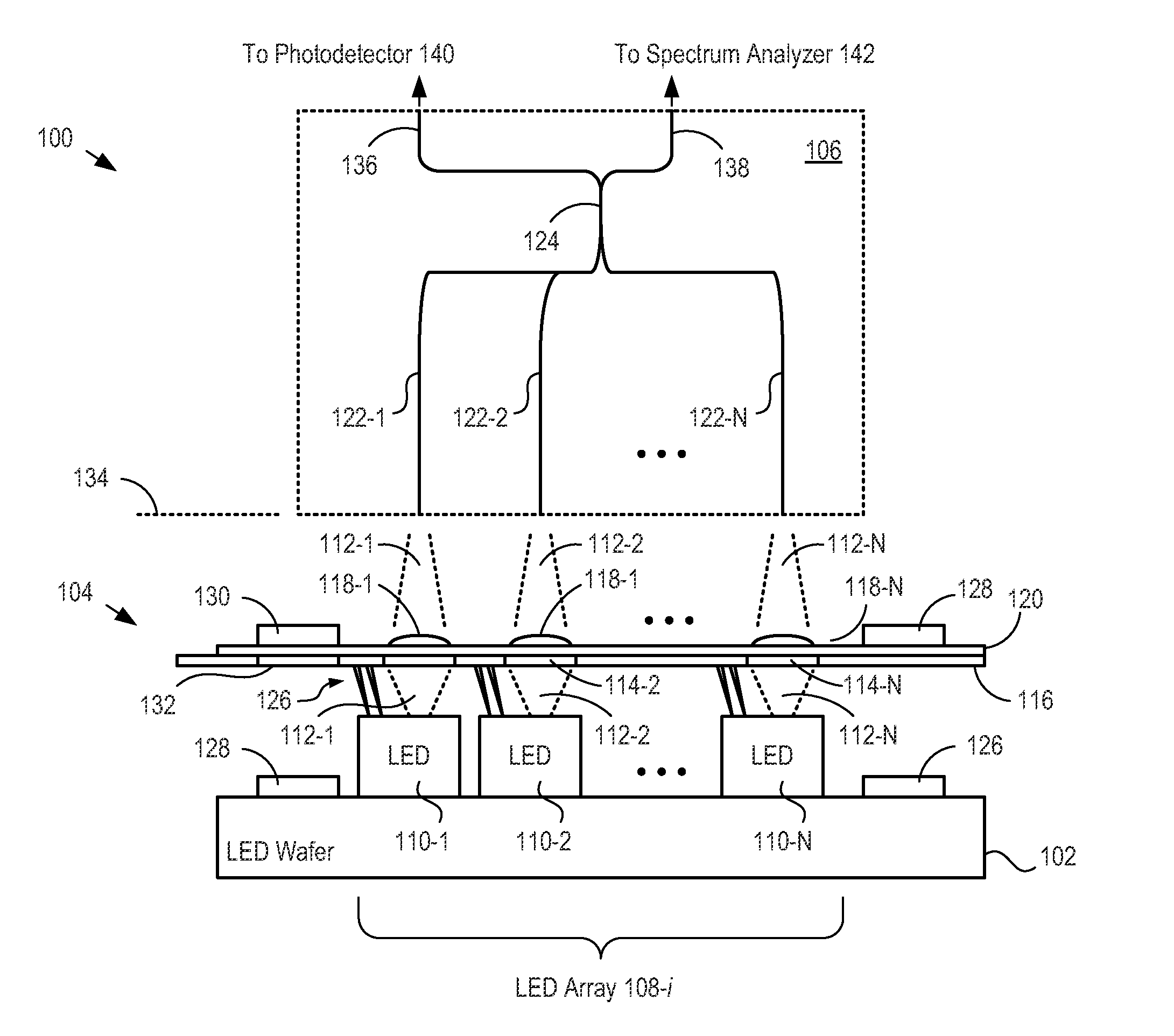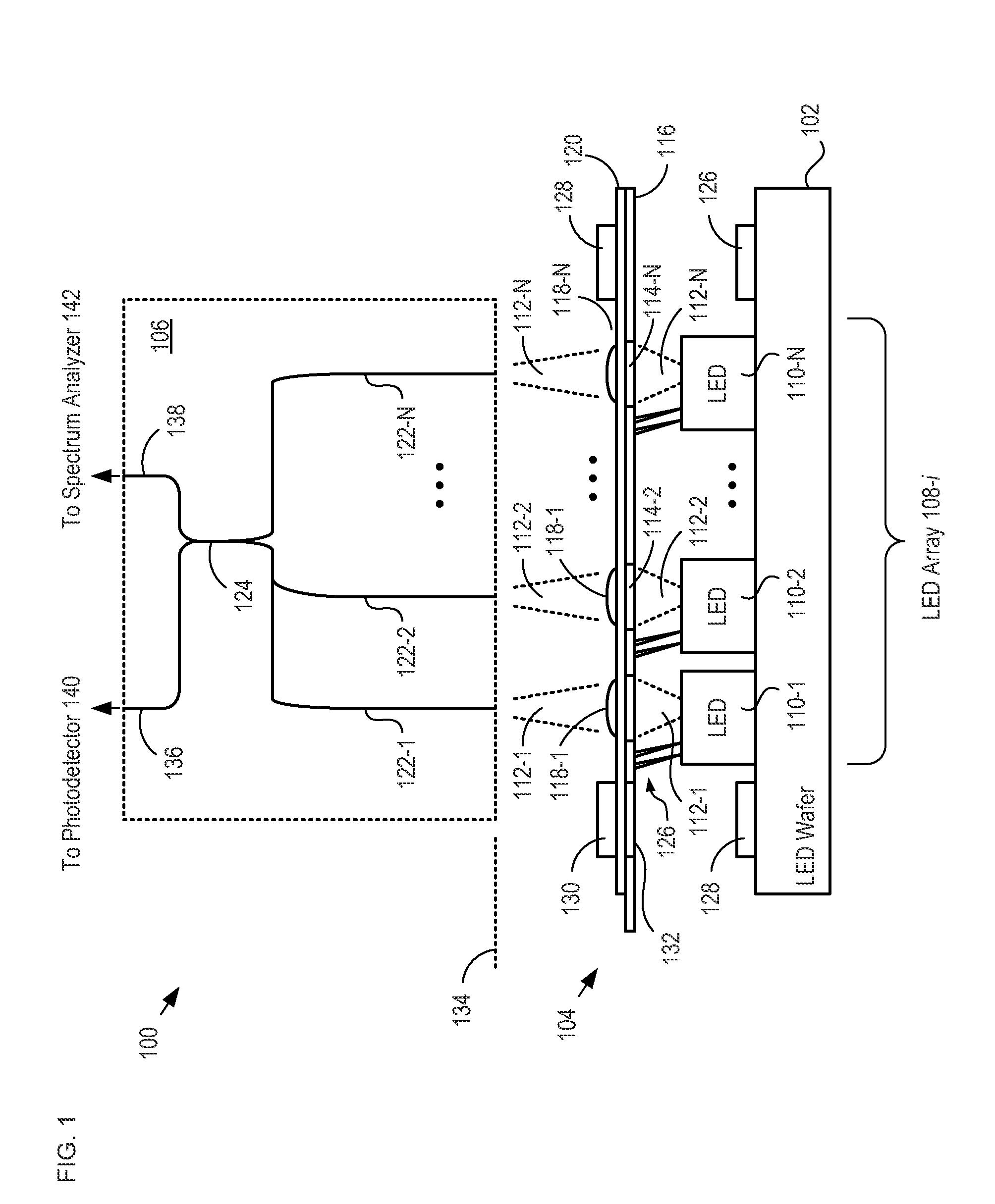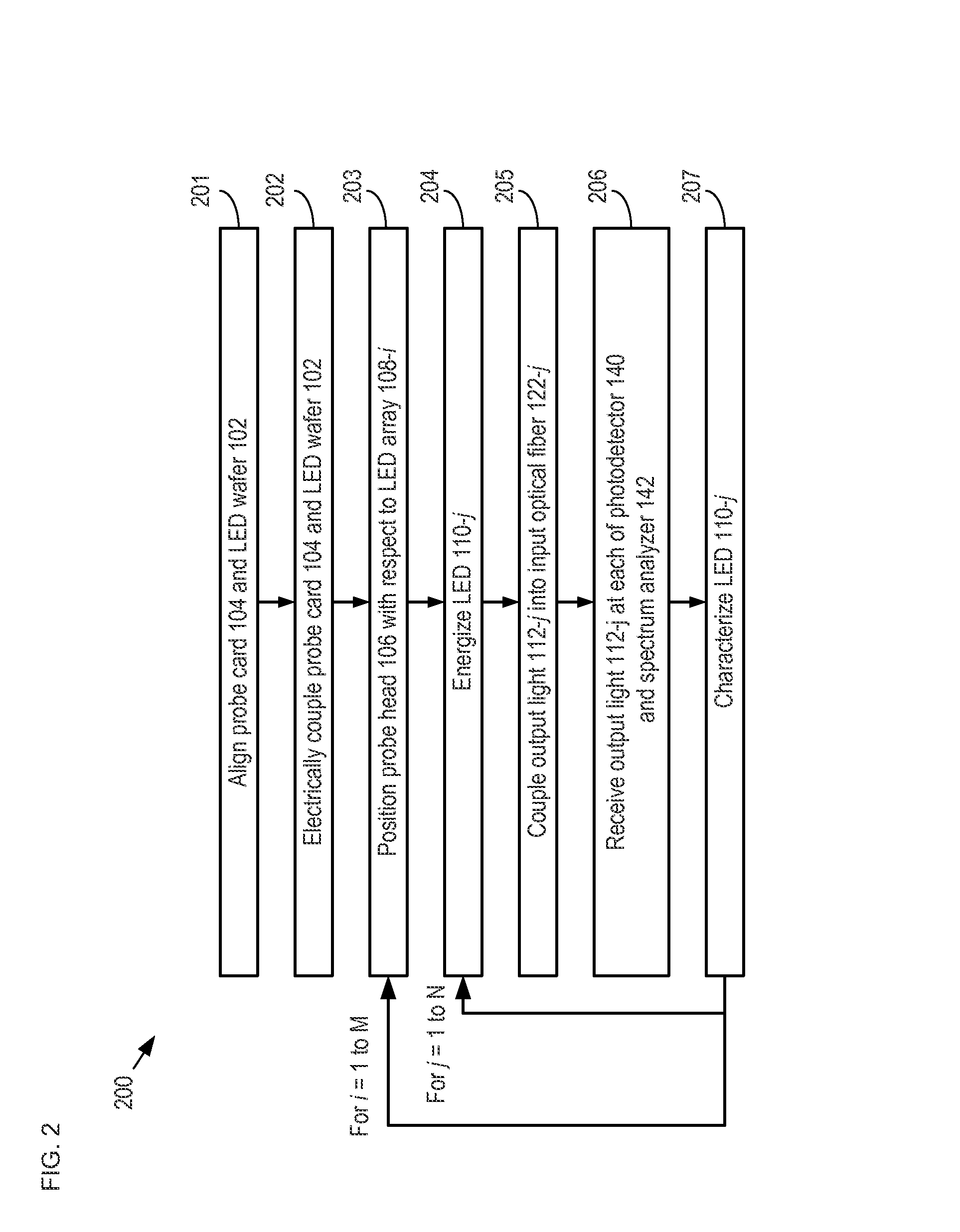Optoelectronic-device wafer probe and method therefor
a technology of optoelectronic devices and wafers, applied in the direction of photometry using electric radiation detectors, optical radiation measurement, instruments, etc., can solve the problems of limited widespread adoption of leds in cases, complicated wafer-level testing, and many of the cost associated with leds arises from inherent challenges, so as to improve coupling efficiency and speed up the rate , the effect of improving the coupling efficiency
- Summary
- Abstract
- Description
- Claims
- Application Information
AI Technical Summary
Benefits of technology
Problems solved by technology
Method used
Image
Examples
Embodiment Construction
[0027]FIG. 1 depicts a probe system in accordance with an illustrative embodiment of the present invention. System 100 comprises probe card 104 and probe head 106.
[0028]FIG. 2 depicts operations of a method suitable for use with probe system 100. Method 200 begins with operation 201, wherein probe card 104 is aligned with LED wafer 102. LED wafer 102 is a substrate comprising LEDs 110-1 through 110-N (referred to, collectively, as LEDs 110), which are LEDs suitable for lighting applications, and which are arranged in arrays 108-1 through 108-M. It should be noted that, although the illustrative embodiment is described in the context of wafer-level testing LED chips, the present invention is suitable for use in the optical probing of wafers of other optoelectronic devices, such as photodetectors, lasers, VCSELs, super luminescent diodes, and the like.
[0029]Probe card 104 is a probe card that has both electrical functionality and optical functionality. Probe card 104 comprises electri...
PUM
 Login to View More
Login to View More Abstract
Description
Claims
Application Information
 Login to View More
Login to View More - R&D
- Intellectual Property
- Life Sciences
- Materials
- Tech Scout
- Unparalleled Data Quality
- Higher Quality Content
- 60% Fewer Hallucinations
Browse by: Latest US Patents, China's latest patents, Technical Efficacy Thesaurus, Application Domain, Technology Topic, Popular Technical Reports.
© 2025 PatSnap. All rights reserved.Legal|Privacy policy|Modern Slavery Act Transparency Statement|Sitemap|About US| Contact US: help@patsnap.com



